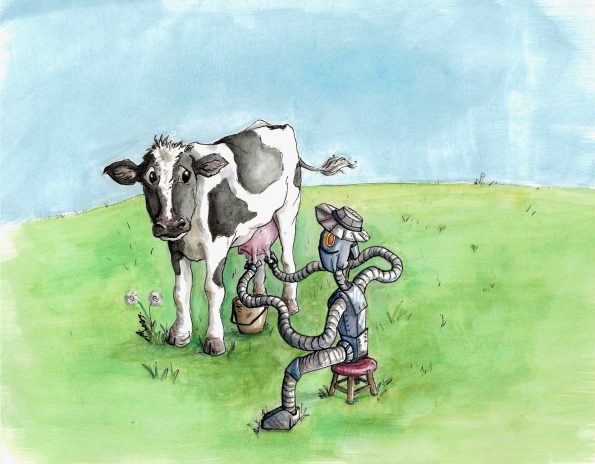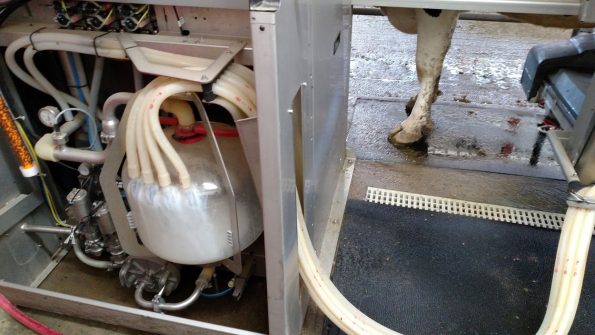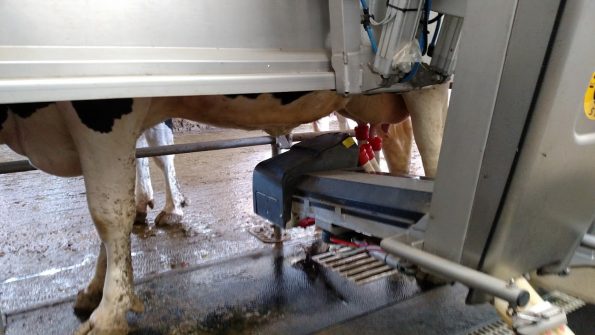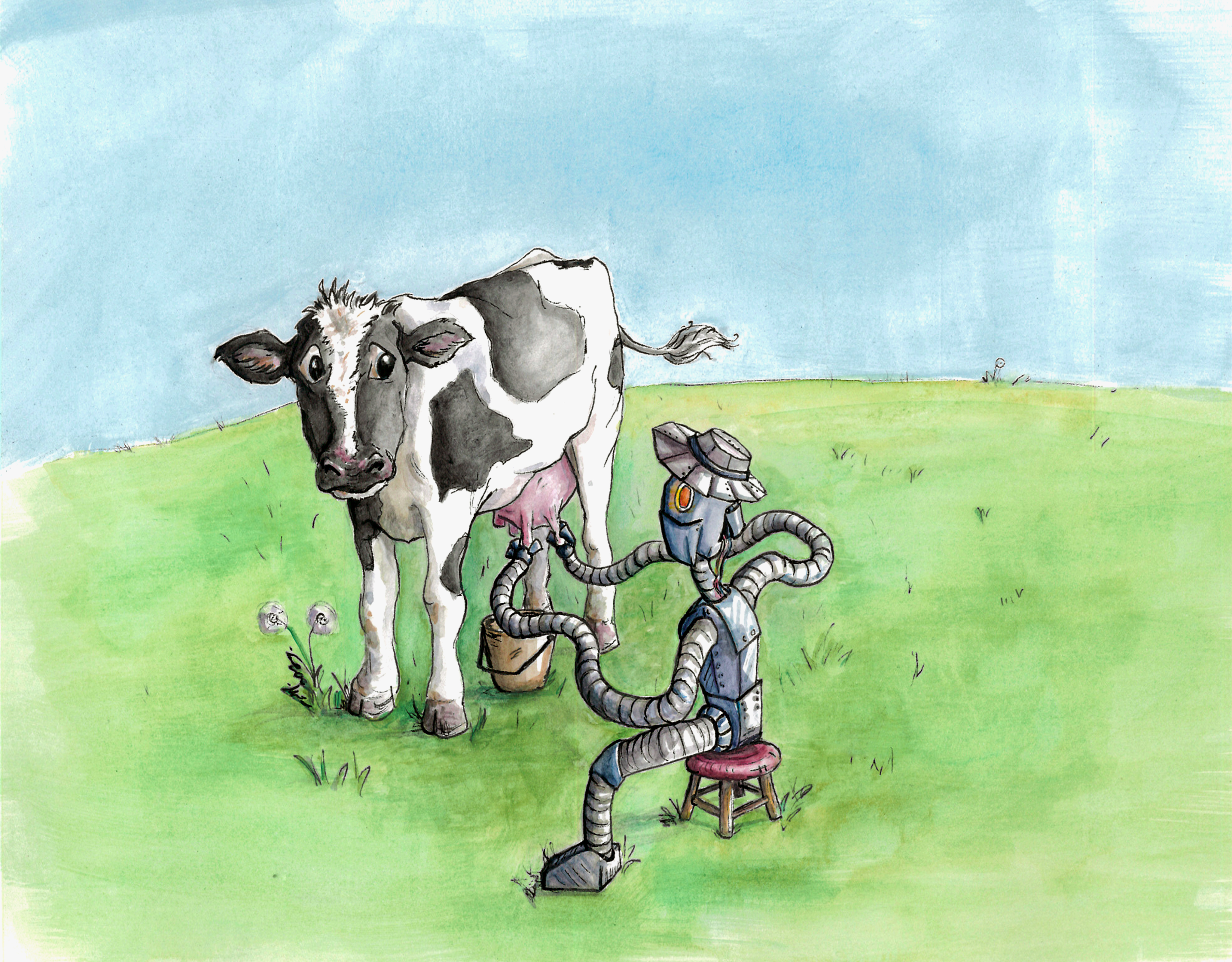
For Tom and Trevor Griffin, taking care of cows at the Circle T Dairy in Cache Valley is the only job they’ve ever had. The farm was started by their now 76-year-old father, who bought the land in Trenton, Utah from his father and father-in-law and started his business with a single cow. He used the milk from that cow to become one of Ed Gossner’s first suppliers, and the Circle T Dairy was born.
Three years ago, the Griffins realized they had made all the improvements they could to their flat milking barn and needed to make a change to expand their business. They looked at other barns in the valley and surrounding areas, but nothing seemed to fit their needs. After seeing robotic dairies in action on a trip to Michigan, Tom told Trevor they should seriously consider installing robots for their own farm. After Trevor saw the process for himself, the brothers decided to make the transition. The Griffins started construction on their new barn in 2014, and on July 7, 2015, the robotic dairy was up and running.
Today, it’s easy to see the benefits of the new setup. The 120 cows each have a collar that helps the system track their milk production, temperature, gait, and feed. The Griffins are aware of potential problems far earlier thanks to this wealth of information.
The biggest change for these farmer brothers since transitioning to the robotic system is that they no longer milk cows morning and night—something they had done their entire lives. Trevor says of the change, “It’s the closest I hope I’ll ever have to new job.” With two robots taking care of the milking, the Griffins are all free to focus on raising calves and feed crops and monitoring and taking care of the cows themselves.

The milking robots that brought this change about are fascinating to watch. When a cow decides it’s time to be milked, she walks into a pen next to the robot. The system logs her information and, if appropriate, activates the robotic arm that cleans the udder, sanitizes itself, cleans the udder again and then attaches cups that milk each quarter. Each cup detaches itself automatically when the quarter is depleted, so there is no danger of unnecessary suction and subsequent damage. The cow is given grain, her data is recorded, and she is sent on her way. If she is in heat or in need of special attention, the robot sends her into a separate pen so the Griffins don’t have to go search for her. Once a cow is finished, the robot sanitizes itself to be ready for the next cow.
Tom explains, “The best part about this is that it is the exact same for the cow every time. Cows love to be in a groove; they love to have the same thing happen every time. There’s no different person, the brushes are the same, they are completely comfortable. They want to be in here. No one is pushing them.” And that consistency helps milk production. Since implementing automated processes, the dairy is collecting 85 lbs. of milk per cow per day. That’s a 13 lb. increase over what they were able to do without the robotics, and the Griffins hope to see even more improvement moving forward. They have space for a third robot and plan to increase their operation to 180-200 cows.
Elsewhere in the barn, an automatic feed pusher moves feed in front of the pens every other hour and a massaging brush hangs above the pen. Cows activate the brush with a push and then stand under the rotating bristles, which help keep them clean, fly-free, and content. They have plenty of room, plenty of feed, and a routine that is focused on their health and well-being.
When asked what he hoped his dairy would help people understand, Tom explained, “I think there are a lot of misconceptions about dairy and how cows are treated.” He pointed out the groups of cows eating, relaxing, getting a brush massage, or being milked and explained, “The cows are not in any way mistreated. If they were, they wouldn’t be walking into the milking machine on their own. We love them and we want to take care of them. They’re all fed and taken care of well before I’m fed and taken care of.”

The Griffins are proud of what they’re doing in Trenton and what they’re teaching their children to do after them. Tom says, “We’re trying to feed America. We produce this great, high-quality product.” And thanks to some milking robots, they are doing it more efficiently than ever.






